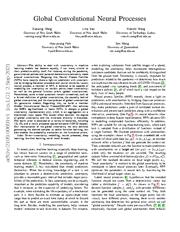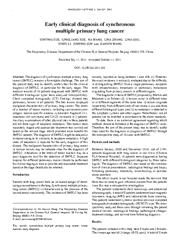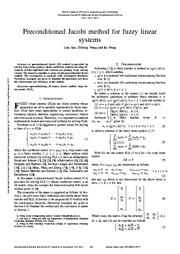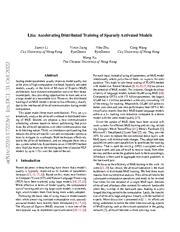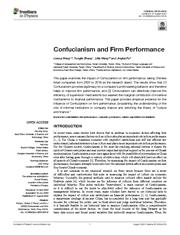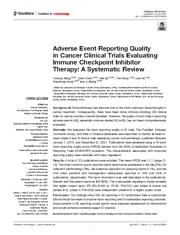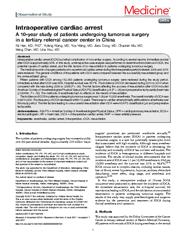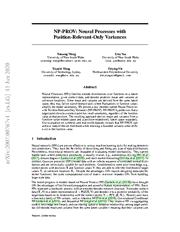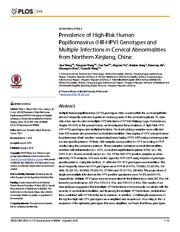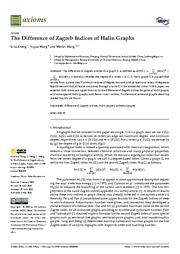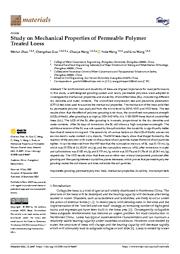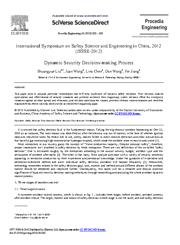A copy of this work was available on the public web and has been preserved in the Wayback Machine. The capture dates from 2021; you can also visit the original URL.
The file type is application/pdf.
Filters
Global Convolutional Neural Processes
[article]
2021
arXiv
pre-print
The ability to deal with uncertainty in machine learning models has become equally, if not more, crucial to their predictive ability itself. For instance, during the pandemic, governmental policies and personal decisions are constantly made around uncertainties. Targeting this, Neural Process Families (NPFs) have recently shone a light on prediction with uncertainties by bridging Gaussian processes and neural networks. Latent neural process, a member of NPF, is believed to be capable of
arXiv:2109.00691v1
fatcat:f5oucquui5af3gf4kgsty4ft4u
more »
... g the uncertainty on certain points (local uncertainty) as well as the general function priors (global uncertainties). Nonetheless, some critical questions remain unresolved, such as a formal definition of global uncertainties, the causality behind global uncertainties, and the manipulation of global uncertainties for generative models. Regarding this, we build a member GloBal Convolutional Neural Process(GBCoNP) that achieves the SOTA log-likelihood in latent NPFs. It designs a global uncertainty representation p(z), which is an aggregation on a discretized input space. The causal effect between the degree of global uncertainty and the intra-task diversity is discussed. The learnt prior is analyzed on a variety of scenarios, including 1D, 2D, and a newly proposed spatial-temporal COVID dataset. Our manipulation of the global uncertainty not only achieves generating the desired samples to tackle few-shot learning, but also enables the probability evaluation on the functional priors.
Early clinical diagnosis of synchronous multiple primary lung cancer
2011
Oncology Letters
The diagnosis of synchronous multiple primary lung cancer (SMPLC) remains a formidable challenge. The aim of the present study was to identify useful clues for the clinical diagnosis of SMPLC, in particular for the early stages. The medical records of 10 patients diagnosed with SMPLC with different histological types were analyzed retrospectively. Chest computed tomography (CT) findings showed two pulmonary lesions in all patients. The two lesions displayed malignant characteristics of primary
doi:10.3892/ol.2011.452
pmid:22740887
pmcid:PMC3362344
fatcat:wa3qc6i4cfdfdo6ko4fdicodbe
more »
... ung cancer. The levels of a number of tumor markers, including carcinoembryonic antigen, neuron-specific enolase, cytokeratin fragment 21-1, squamous cell carcinoma and CA125 increased in 2 patients. Auxiliary examinations of other physical sites in these patients did not show signs of neoplasm metastasis. Two tumors were separately staged and appropriate treatment was carried out based on the revised stage, which provided more benefits for SMPLC patients. The diagnosis of SMPLC might be delayed or mistaken owing to its similarity to neoplasm metastasis. A high index of awareness is required for the early diagnosis of this disease. The malignant characteristics of primary lung cancer in various lesions may be valuable clues for the diagnosis of SMPLC. Alterations in the levels of tumor markers may be a poor diagnostic tool for the detection of SMPLC. Separate biopsies for different pulmonary masses should be performed for clinical staging as soon as possible and reasonable treatment based on the stage should also be selected.
Preconditioned Jacobi Method For Fuzzy Linear Systems
2013
Zenodo
Wang are with the Department of Mathematics, Shanghai University, Shanghai 200444, P.R. China. S. Wang is with Nanyang Vocational College of Agriculture, Nanyang 473000, P.R. China. ...
solving FLS (1), such as Abbasbandy, Ezzati and Jafarian [1] , [2] , [3] , [9] , Allahviranloo [4] , [5] , [6] , Dehghan and Hashemi [8] , Fariborzi Araghi and Fallahzadeh [10] , Liu [12] , Miao, Wang ...
doi:10.5281/zenodo.1087892
fatcat:rbxrou2hyfd5hhepax5ltun2yu
Spin gapless semiconductors
[article]
2020
arXiv
pre-print
The spin-gapless semiconductors (SGS) was conceptually proposed and coined by Wang (one of the co-authors of this article) in 2008 through the designs of band structures. ...
arXiv:2006.06883v1
fatcat:jhmsirdeava2npo4rv3xxd37rm
Contrastive Semantic-Guided Image Smoothing Network
[article]
2022
arXiv
pre-print
Wang et al. / Contrastive Semantic-Guided Image Smoothing Network
Note that using only the contrastive loss to train the proposed network may not yield satisfactory results. ...
arXiv:2209.00977v1
fatcat:7m2rc367vjg4pid5fgs4hfvb5q
Accelerating Distributed MoE Training and Inference with Lina
[article]
2024
arXiv
pre-print
Second, we design and build Lina to address the all-to-all bottleneck head-on. ...
Lina opportunistically prioritizes all-to-all over the concurrent allreduce whenever feasible using tensor partitioning, so all-to-all and training step time is improved. ...
arXiv:2210.17223v2
fatcat:j6b42rsde5fvll6qa5dcrwfvcm
Confucianism and Firm Performance
2020
Frontiers in Physics
Copyright © 2020 Wang, Zhang, Wang and Fu. This is an open-access article distributed under the terms of the Creative Commons Attribution License (CC BY). ...
doi:10.3389/fphy.2020.00319
fatcat:ch5hxvcvwvh5tpkew42ucsp6e4
Adverse Event Reporting Quality in Cancer Clinical Trials Evaluating Immune Checkpoint Inhibitor Therapy: A Systematic Review
2022
Frontiers in Immunology
Data Extraction Two of the authors (Yuhong Wang and Shaodong Hong) defined a harm reporting quality score (HRQS) based on the 2004 CONSORT extension. ...
doi:10.3389/fimmu.2022.874829
pmid:35874673
pmcid:PMC9301013
doaj:446516b0c21e4b3aa584320ca7d47640
fatcat:2uadhsxkunaprcvmztqbdu5nt4
Intraoperative cardiac arrest
2017
Medicine
Intraoperative cardiac arrest (IOCA) is a lethal complication of noncardiac surgery. According to several reports, immediate survival after IOCA is approximately 50%. In this study, a retrospective case analysis was performed to determine the incidence of IOCA, the potential causes of cardiac arrest, and the risk factors of no resuscitation in patients undergoing tumorous surgery. The medical records of surgery patients who experienced cardiac arrest during the intraoperative period between
doi:10.1097/md.0000000000006794
pmid:28445319
pmcid:PMC5413284
fatcat:wi5ukerkkjhshct26xevbtcquy
more »
... and 2014 were reviewed. The general conditions of the patients with IOCA were compared between the successfully resuscitated group and the unresuscitated group. Fifteen patients with IOCA among 142,853 patients undergoing tumorous surgery were reviewed during the study period. Immediate survival after IOCA was 60%. Hospital survival was 46.7%. The incidence of IOCA decreased during 2010 to 2014 when compared with the rate during 2005 to 2009 (P < .05). The risk factors affecting the success of resuscitation after IOCA included American Society of Anesthesiologists Physical Status (ASA PS) classification ≥ III (P < .05) and preoperative tachycardia (heart rate ≥100/min, P < .05). The methods of anesthesia had no effects on the results of resuscitation. The incidence of IOCA in patients undergoing tumorous surgery was 1.05 per 10,000 anesthesia. The overall mortality of IOCA was 0.56/10,000. The frequency of IOCA decreased within 10 years. There was no cardiac arrest primarily attributable to anesthesia over this study period. The risk factors leading to unsuccessful resuscitation after IOCA were ASA PS classification ≥ III and preoperative tachycardia. Abbreviations: ASA PS = American Society of Anesthesiologists Physical Status, CPR = cardiopulmonary resuscitation, ECG = electrocardiogram, HR = heart rate, IOCA = intraoperative cardiac arrest, MAP = mean arterial pressure.
NP-PROV: Neural Processes with Position-Relevant-Only Variances
[article]
2020
arXiv
pre-print
Neural Processes (NPs) families encode distributions over functions to a latent representation, given context data, and decode posterior mean and variance at unknown locations. Since mean and variance are derived from the same latent space, they may fail on out-of-domain tasks where fluctuations in function values amplify the model uncertainty. We present a new member named Neural Processes with Position-Relevant-Only Variances (NP-PROV). NP-PROV hypothesizes that a target point close to a
arXiv:2007.00767v1
fatcat:lc3m3bxqivgejkmhyphb22afzq
more »
... xt point has small uncertainty, regardless of the function value at that position. The resulting approach derives mean and variance from a function-value-related space and a position-related-only latent space separately. Our evaluation on synthetic and real-world datasets reveals that NP-PROV can achieve state-of-the-art likelihood while retaining a bounded variance when drifts exist in the function value.
Prevalence of High-Risk Human Papillomavirus (HR-HPV) Genotypes and Multiple Infections in Cervical Abnormalities from Northern Xinjiang, China
2016
PLoS ONE
Multiple human papillomavirus (HPV) genotypes often coexist within the cervical epithelia and are frequently detected together in various grades of the cervical neoplasia. To date, only a few reports exist on multiple HPV infections of HPV in Xinjiang Uygur Autonomous Region (XUAR). In the present study, we investigated the prevalence of High-Risk HPV (HR-HPV) genotypes and multiple infections. Cervical cytology samples were collected from 428 women who presented cervical abnormalities.
doi:10.1371/journal.pone.0160698
pmid:27494179
pmcid:PMC4975475
fatcat:x3kmyle3xbczdiqbcgffe7rpf4
more »
... ng of HPV was performed by polymerase chain reaction-sequencing based typing (PCR-SBT) using consensus primers and specific primers. Of them, 166 samples were positive for HPV according to PCR results using the consensus primers. These samples contained cervical abnormalities enriched with inflammation (n = 107), cervical intraepithelial neoplasia (CIN) I (n = 19), CINII-III (n = 9) and cervical cancer (n = 31). Of the 166 HPV positive samples as determined by PCR analysis, 151 were further typed by PCR-SBT using 19 pairs of genotypespecific primers. Using this method, 17 different HR-HPV genotypes were identified. The most frequently observed HPV genotypes were HPV16 (44.0%, 73/166), 53 (28.9%, 48/ 166), 52 (25.3%, 42/166), 58 (22.3%, 37/166) and 35 (17.5%, 29/166). The proportions of single and multiple infections in the HPV-positive specimens were 34.9% and 65.1%, respectively. Multiple HPV types were most prevalent in the inflammatory state (63.0%), followed by cervical cancer (24.1%), CINI (11.1%), and CINII-III (1.9%). The results of our data analyses suggested that i) multiple HPV infection is not necessarily correlated with the severity of cervical abnormalities; and ii) among the multiple HPV infections, double infections combined with HPV16 is the most common. In addition, L1 full-length sequences of the top five high-risk HPV genotypes were amplified and sequenced. According to the L1 sequence of the epidemic genotypes that were amplified, we found that these genotypes PLOS ONE |
Privacy-aware Data Trading
[article]
2020
arXiv
pre-print
Considering that the data provider has no control of data privacy after transferring private data to the data collector, Weina Wang et al. ...
arXiv:2003.13897v1
fatcat:jistz5vujfdydc2jtr2j5zyuhu
The Difference of Zagreb Indices of Halin Graphs
2023
Axioms
Wang and Yuan [14] discussed the difference between M 1 (G) and M 2 (G) to yield some interesting extremal results and related structural properties. Horoldagva et al. ...
Much more recently, Wang and Zheng [17] established both sharp lower and upper bounds on ∆M(G) for maximal plane graphs with minimum degree four and diameter two, and found extremal graphs satisfying ...
doi:10.3390/axioms12050450
fatcat:twt3suzjcfbslacicm43xsxq5q
Study on Mechanical Properties of Permeable Polymer Treated Loess
2022
Materials
The chemical composition of permeable polymers is given by Li and Wang [18, 32] . ...
The chemical composition of permeable polymers is given by Li and Wang [18, 32] . ...
doi:10.3390/ma15196647
pmid:36233991
pmcid:PMC9572338
fatcat:yw6rfr5thnhrpcsscpnwj5vf2q
Dynamic Security Decision-making Process
2012
Procedia Engineering
This paper aims to propose particular technologies that will help implement all dynamic safety decisions. Prior decision ensu res optimization and effectiveness of security measures and prevents accidents from happening; matter decision offers the emergency measures against accident spread and extension; post decision ascertains the causes, provides relevant countermeasures and identifies responsibilities, which can help avoid similar accidents from happening again.
doi:10.1016/j.proeng.2012.08.045
fatcat:b7wd3sakzfhthindiu5gabonei
« Previous
Showing results 1 — 15 out of 10,579 results

